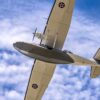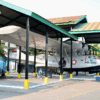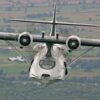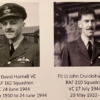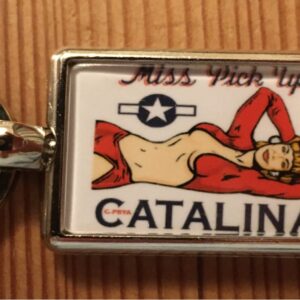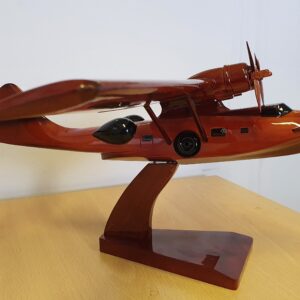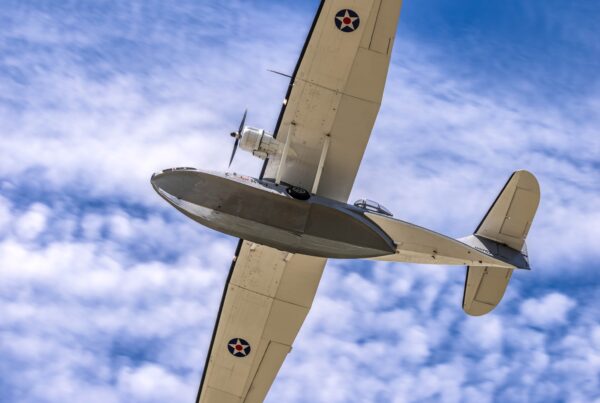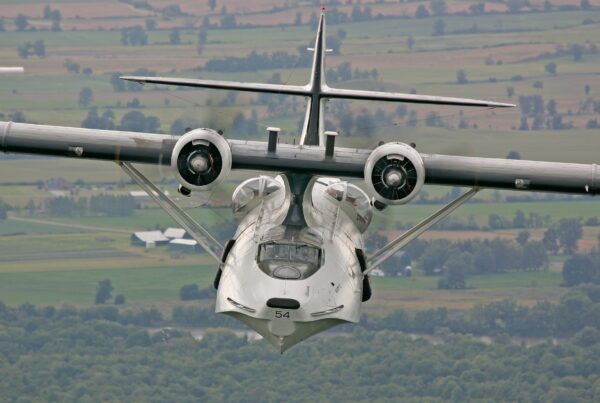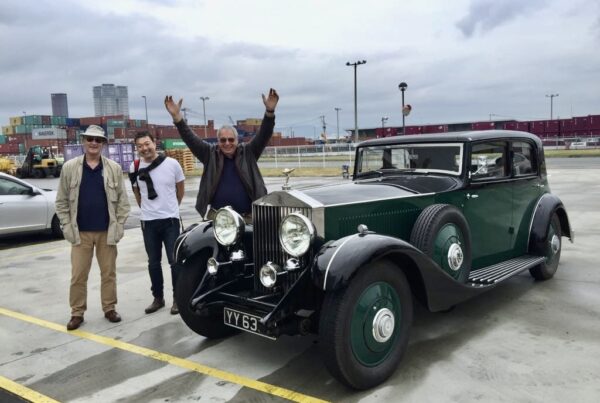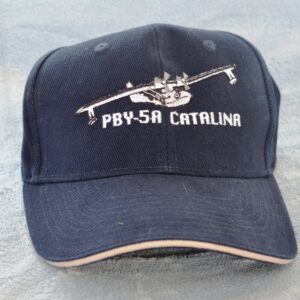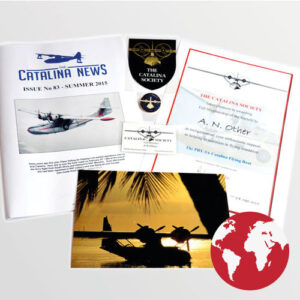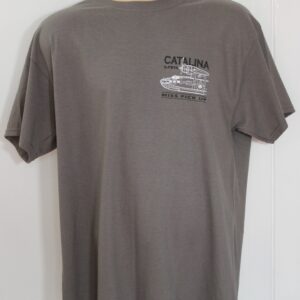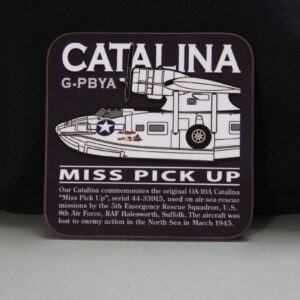This article is taken from the print version of The Catalina News magazine, Issue No 103, Spring/Summer 2025 received by subscribing members of The Catalina Society.
A question frequently asked is: ‘How many Catalinas are flying or airworthy?’. Of course, in order to answer that question, there needs to be a definition of what is flyable or airworthy. For example, our own Catalina, when in the hangar over the winter, is airworthy but not flying. But applying a sensible definition of an example that is airworthy and has flown in, say, the last 12 months or so, the answer comes out at just eight – two in Canada (C-FNJE and C-FPQL); one in the United Kingdom (our G-PBYA) and five in the USA (N2172N, N222FT, N9767, N427CV and N9521C). There are others that are potentially airworthy in Australia, Canada, Chile, Greece, New Zealand and the USA but these are not ready to fly yet and at least three are for sale. The Catalina website has a regularly updated summary of all surviving Catalinas – just click the ‘Survivors’ tab here.
Meanwhile there is plenty to report upon in this edition.
Our shareholder/pilot Jeff Boyling has filed a report elsewhere in this magazine about his recent trip to Australia and in that he mentioned the move of the famous PB2B-2 Catalina VH-ASA Frigate Bird II from its home of many years at the Powerhouse Museum in Sydney, NSW to the Historical Aircraft Restoration Society (HARS) collection of airworthy and static aircraft at Albion Park/Shellharbour Airport, also in the city. It was dismantled at The Powerhouse after previously being lowered from her suspended position from the roof and was moved by road during the early hours of Tuesday August 20th, 2024, arriving at Albion Park at around 03:00hrs. She was subsequently re-assembled and is exhibited in the HARS hangar resting in a cradle. It is good news that HARS will be the custodian of VH-ASA whilst re-development of The Powerhouse takes place. If the focus of the latter is to move away from its previous exhibits then perhaps HARS should become Frigate Bird II’s permanent home?….
Also reported by Jeff was the movement of PBY-6A VH-EAX from one part of the Qantas Founders Museum at Longreach, Queensland to another. Previously parked outdoors in the hot sun, she was moved to a more sheltered position under a large, open-sided canopy in October last year. She now shares a shady plot with a number of other iconic aircraft operated by Qantas over the years. Although not strictly representative of the original Catalinas used, she is painted to represent one of the five aircraft that flew on the famous wartime ‘Double Sunrise’ flights – G-AGIE Antares Star. Full marks to the museum for ensuring this airframe is protected.
Another Catalina that is kept under a similar cover may be found at the Dirgantara Mandala TNI-AU museum, Yogyakarta, Indonesia. A PBY-5A, last registered N1563M, it has been displayed there since the early 1990s, initially painted to represent a TNI-AU (Indonesian Air Force) example, serial PB-505. A few years back, its blue colour scheme was replaced by an overall white livery and the serial PB-501. Both TNI-AU serials were worn by air force machines.
A Catalina that could really do with some protection from the elements is the former Royal Danish Air Force PBY-6A L-866/8466M at the RAF Museum Midlands, RAF Cosford. I have reported before that a short-term move from one of the museum’s hangars to a position outside some years ago has turned into a long-term fixture. More recently, this Catalina appeared on the museum’s ‘loans-list’ which meant it could be available to another museum willing to take it on. Tom Hopkins, Curator (Aircraft and Exhibits) at Cosford kindly provided me with an update in February. He wrote: ‘The period of the pro-active loans-list being live has now passed. The Catalina received no expressions of interest. By chance, another interested loan party emerged last year, and we were optimistic for a time that we might be able to progress that line of enquiry, but we were not able to progress with it. We would be happy to engage with other loan partners if they came forward, but we have no intention of transferring the Catalina out of the museum’s collection permanently. We removed the fabric control surfaces to prevent further degradation and damage. At present, we do not have the resources to re-fabric it until at least after 2027. By that time, we may be closer to having more concrete and viable but still tentative options for moving it to public display indoors. In the meantime, we will continue to keep her under observation and run a programme of active de-humidification. I appreciate that this is not the optimum solution and, in an ideal world, would of course have it inside.’
Back to the Antipodes and New Zealand for a brief update on Canso A ZK-PBY. She has been grounded at New Plymouth, North Island for some time now although the intention is to move her to Hamilton, also on North Island, where facilities for ongoing maintenance and storage are better. Lawrence Acket reports that the volunteer engineering team are making good progress in getting the Cat’ ready for a ferry flight. In February, the team were awaiting the return of an overhauled carburettor and looking to source two replacement fuel boost pumps. Overall, ZK-PBY’s future is still not secure. She remains up for sale although is not currently being actively marketed. Readers with long memories may recall the BBC TV documentary The Last African Flying Boat which featured ZK-PBY in an earlier life when she was involved in African safari flights, initially as C-FJCV and, later, Z-CAT.
Now, a quick round-up of news concerning Catalinas in the USA. First, Wright Cyclone-powered ‘Super Cat’ N31235 is still at the Palm Springs Air Museum in California and shows very little sign of restoration activity. It does not even appear in the list of projects on the museum’s website. However, an email to the museum received a very quick reply from Fred Bell their Vice Chairman who advised that: ‘she is still in our restoration department – the plan is now to return it to static display sometime next year’. Work continues to an amazingly high standard on the Collings Foundation/American Heritage Museum PBY-5A N459CF, originally US Navy BuNo 2459, at the American Aero Services facility at New Smyrna Beach, Florida. The ‘Museum website was recently updated as follows: ‘That old saying ‘the devil is in the details’ certainly holds true for the ongoing restoration of BuNo 2459. Though the exterior restoration is almost complete. The interior restoration to bring the aircraft back to accurate 1942 wartime configuration has been an enormous task that has tested the skills of the restoration crew led by Project Manager Casey Littrell. Because the aircraft arrived from Europe with little original equipment, nearly all of the interior components have either had to be found or fabricated. Considering the early vintage of this PBY, original equipment is scarce so just sourcing the material is a monumental task in its own right. And for items that need to be fabricated, finding original drawings or photos to accurately reconstruct items is an additional challenge.’
Long-term readers will know that from time-to-time I have reported on PBY-5A N423RS covering its lengthy sojourns at various UK airfields as restoration projects came and went and then its dismantling at Biggin Hill in late-2014 and subsequent shipping to the USA and another period of outdoor storage in Florida. The seemingly good news that N423RS had been moved by road to Hudson Valley Regional Airport, Poughkeepsie, NY by owners Tunison Foundation Inc on June 2023 for restoration have turned out to be unfounded. In September last year, Tunison announced in a press release that the project had been shelved and the Catalina is for sale. Warbird Aero Restorations of Pearland, TX had already carried out some work on the wing centre section, estimated to cost around US$200,000 and 60% complete at the time the project was pulled. The press release stated that ‘setbacks in the project’ had led to the Tunison Foundation restoration, operations and development team to reassess the viability of the project and on July 10th last year decided to pursue the sale of the aircraft ‘as-is’ along with its substantial parts stock. The sale, with an asking price of US$250,000, was handled by Goodspeed Flying Service of East Haddam, Connecticut and their owner, Luc Zipkin, advised me in March that N423RS was duly sold to John O’Connor, owner of Canso A N222FT, in December last year. John’s intention is to restore it to airworthy condition and if N222FT is anything to go by, ‘RS will be in good hands.
Lastly, PBY-6A HK-2115P was imported to Europe in poor state from Colombia back in early-2018. It was initially stored in Molbergen nr Oldenburg in Germany but was subsequently moved to the premises of Rare Bird Aviation Ltd, an Austrian company with a facility at Meidl Airport, Fertoszentmiklos in Hungary. They have been pretty tight-lipped about this Catalina but it is understood to be owned by an Austrian and recent photographs have appeared showing that the hull at least is stored at the back of the very impressive Rare Bird’ hangar at Meidl. On the face of it, this would appear to be a long-term project and whether to static or flying condition is not known. Watch this space!
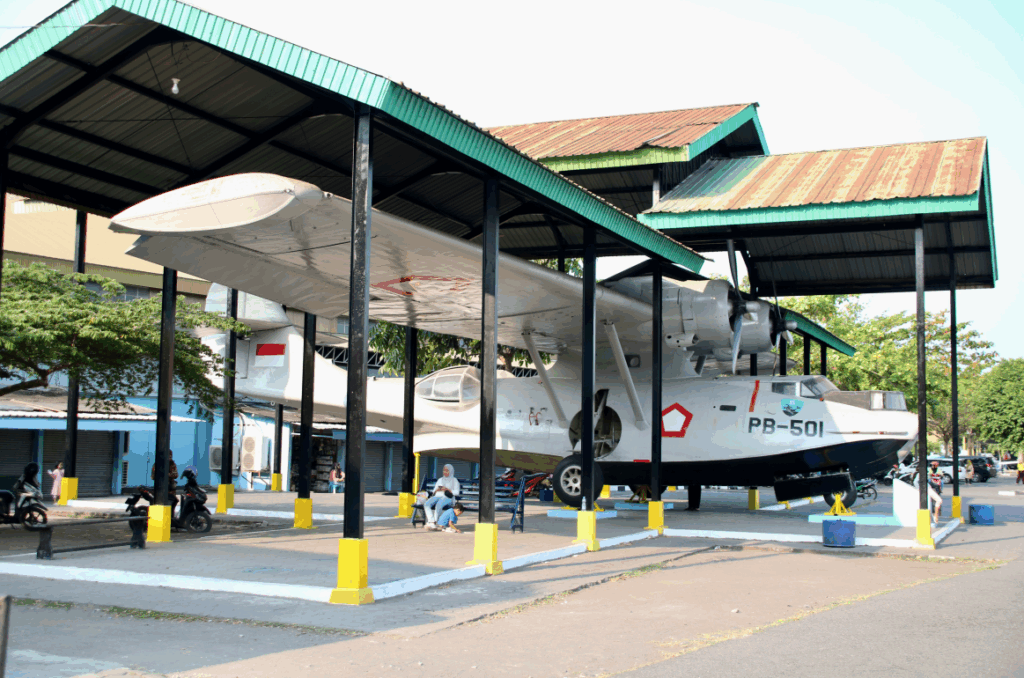
The PBY-5A Catalina ‘PB-501’ on show at the Dirgantara Mandala TNI-AU museum, Yogyakarta, Indonesia as seen by Tom Singfield last year
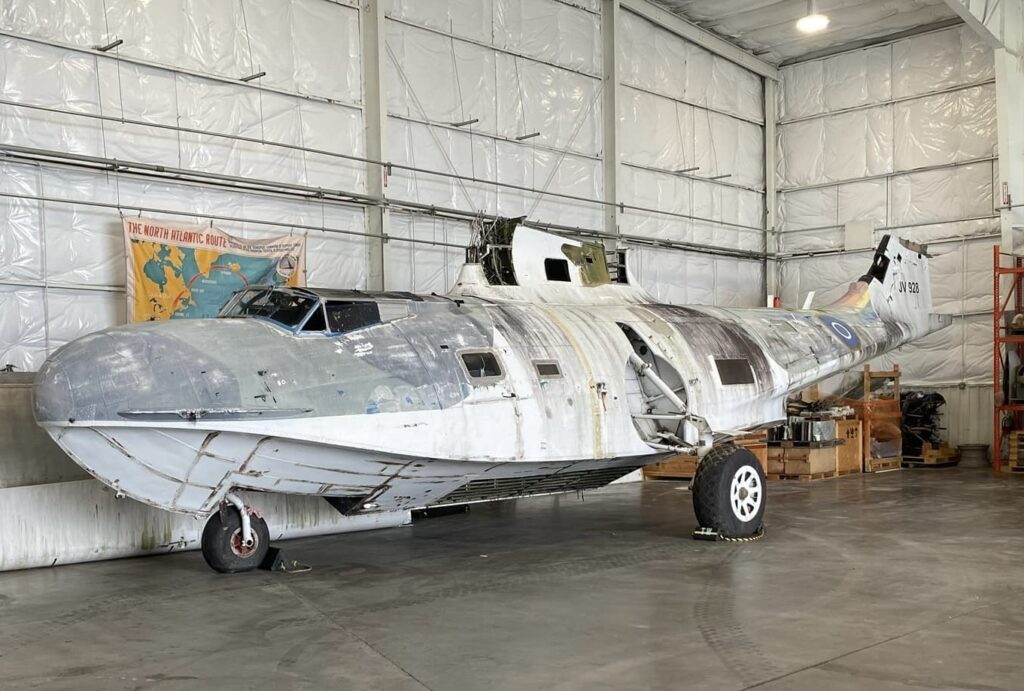
The one-time Greenpeace PBY-5A N423RS shortly after arriving at Poughkeepsie, NY in 2023. She has recently been sold to John O’Connor
Tunison Foundation
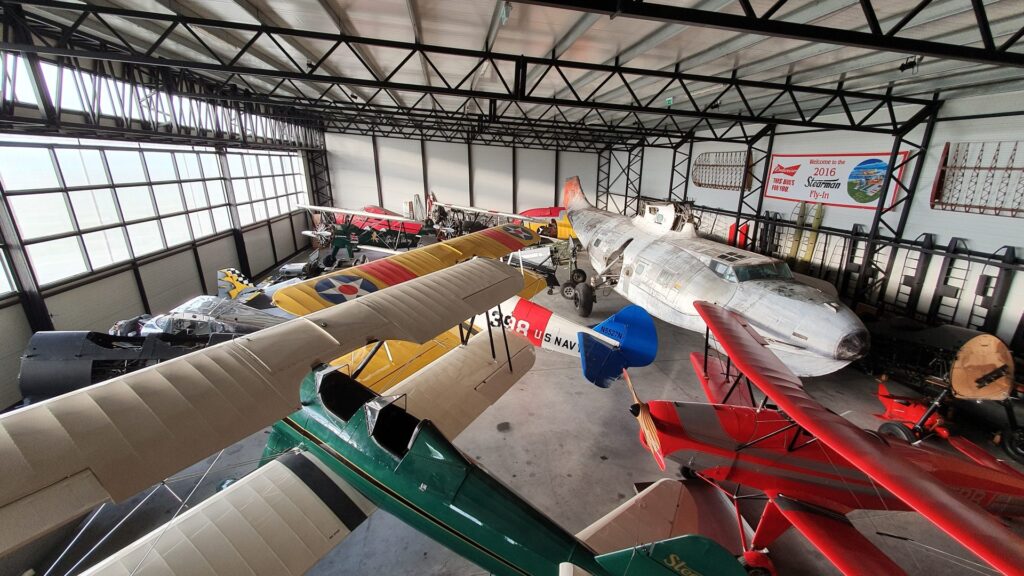
PBY-6A ex-HK-2115P in store with Rare Bird Aviation Ltd at Meidl Airport, Fertoszentmiklos in Hungary
Rare Bird Aviation Ltd


